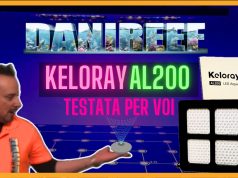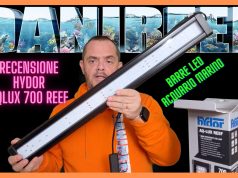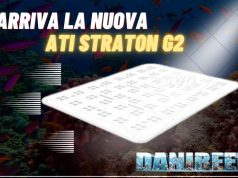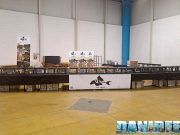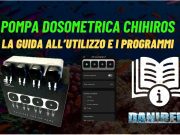Our new method DaniReef LAB for PAR measurement
During the long nights spent on our forum we always wondered how could we compare PAR from different ceiling lights. Even though we had the perfect device, the Quantum Meter MQ-510 di Apogee, we always referred only to the value measured at the centre at 20 cm of distance, more or less.
The Quantum Meter MQ-510 measures the PAR, expressed in PFFD that is photosynthetic photon flux density in μmol m-2 s-1. This device is calibrated to work underwater, so if it’s in air the measured value has to be divided by 1,32 that’s the dive factor. We have to do the conversion. The values you’re going to see are correct.

We decided to make a square base of 70×70 cm, we set 17 fiducial points where we placed the sensor Quantum Meter MQ-510 and we also made 3 lifts of 20, 40 and 60 cm for the ceiling light, in order to have the same distance from the sensor. This will allow us to create the curves which can be compared to other ceiling lights’s, all tested at the same distances. Notice that this distance is measured between the base of the sensor and the ceiling light. In reality it should be decreased of 3,5 cm that is the height of the measurement cylinder and increased by 0,5 cm that’s the dimension of the spacers that lift the ceiling light.
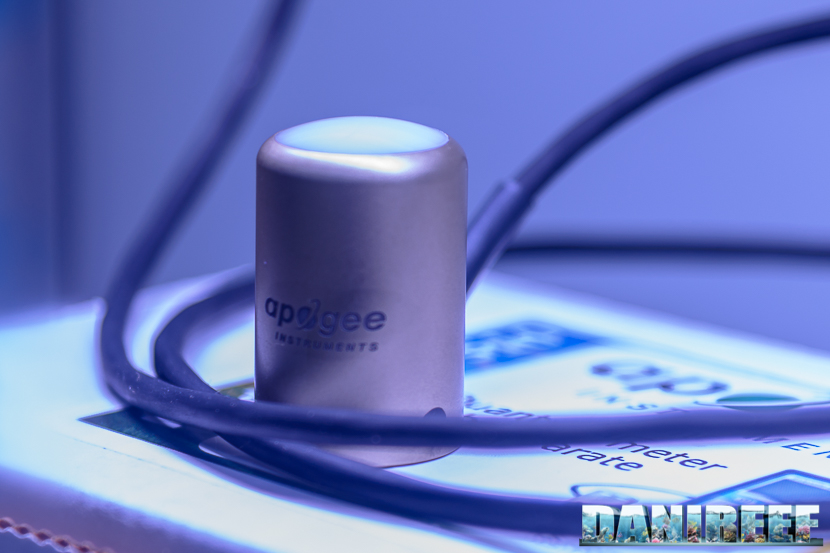
In total the three measurements are made from 17, 37 and 57 cm of distance. Because they’ve been done in air they will be corrected.
Actually, the test of these LED bars gave us some problems, because we had to distance the spacers in order to consider also the light of the peripheral LED. Moreover, the bars where exactly in the middle.
PAR measurement from 17 cm of distance
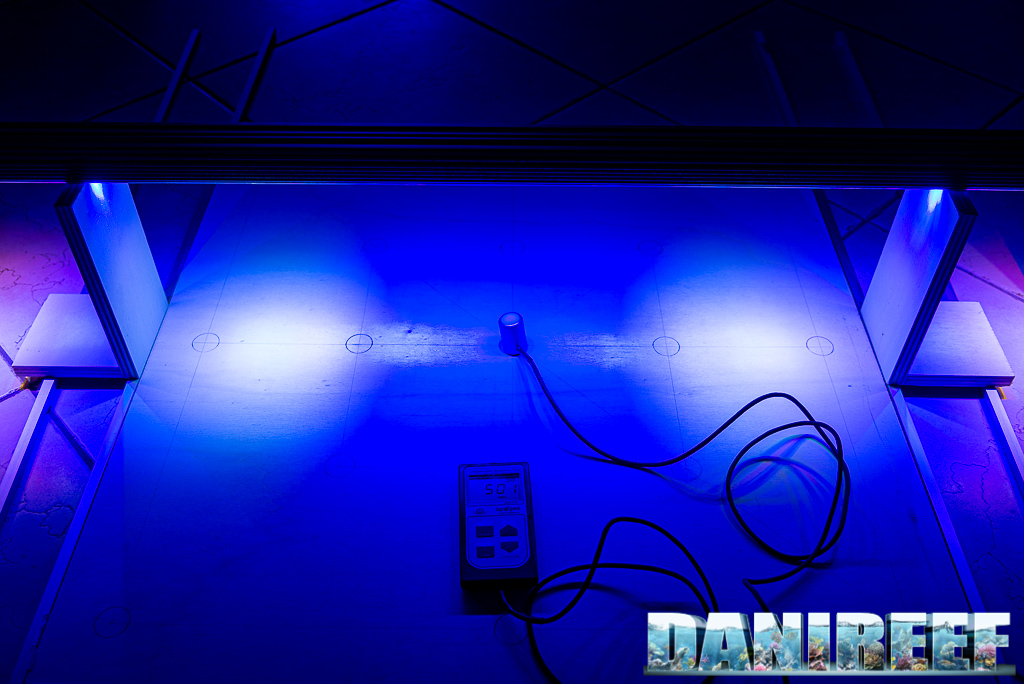
This is the condition of the test. Below there are the chart and the device, above the bars placed on the aluminum bars.
Here the collected values:
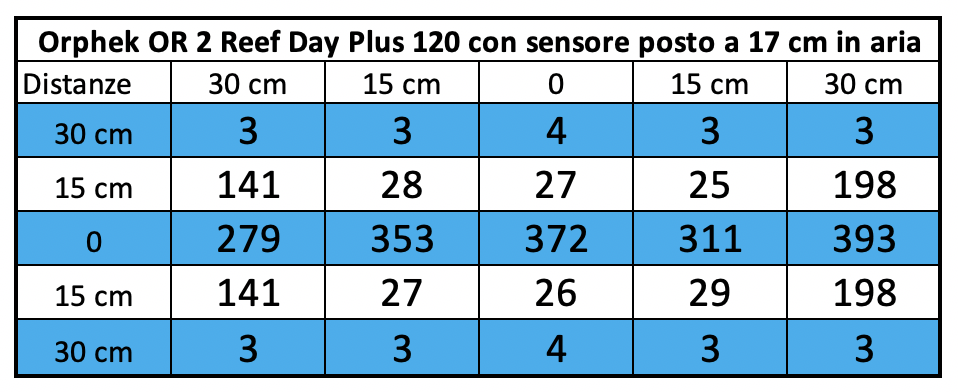
And that’s the corresponding chart, we used the same scale for ceiling lights similar for power, in this case, speaking of bars, we decreased the value of the maximum scale. In the next test of bars we will use the same evaluation scale.
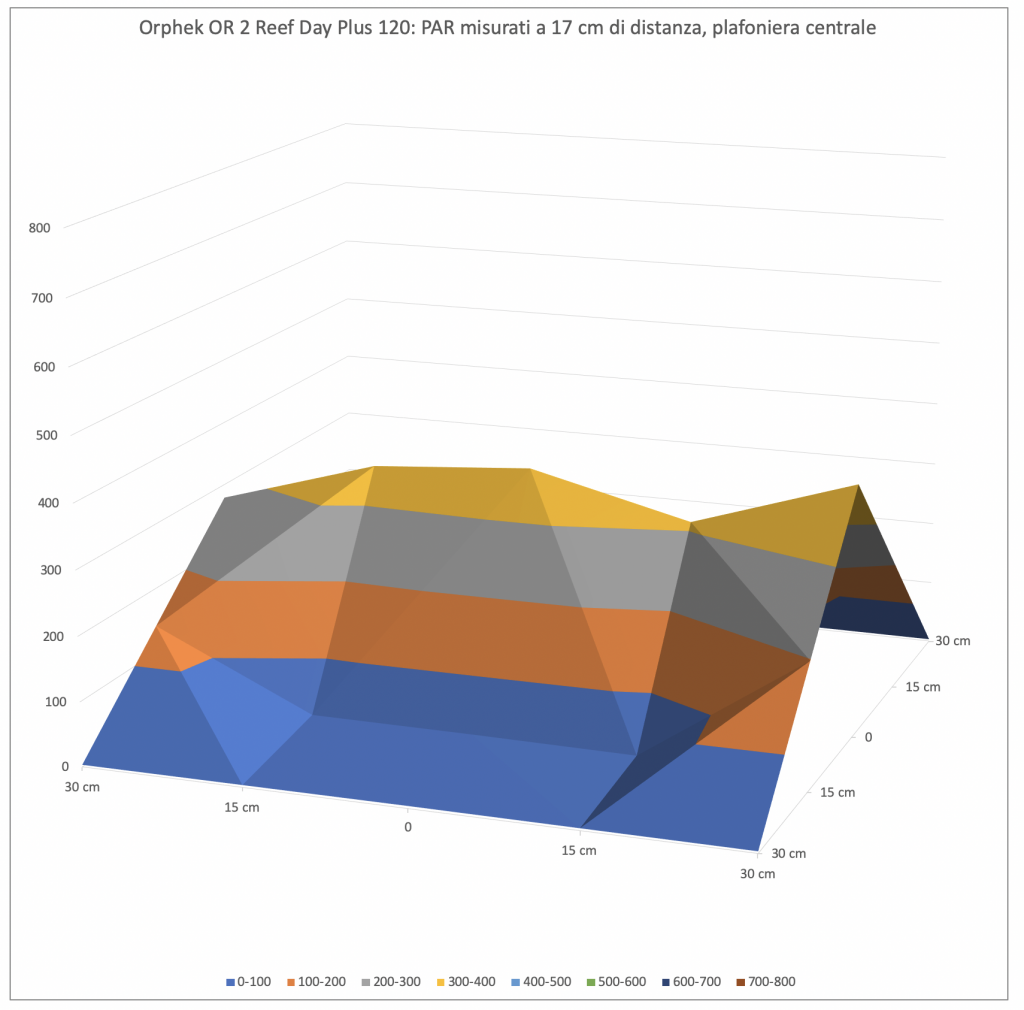
As you can see the bar creates a curve similar to a tent, with the spatial differences depending on the typology of used LED. Differently from the classic ceiling lights the decay is verry linear at about 30 cm of distance from the light source.
PAR measurement from 37 cm of distance
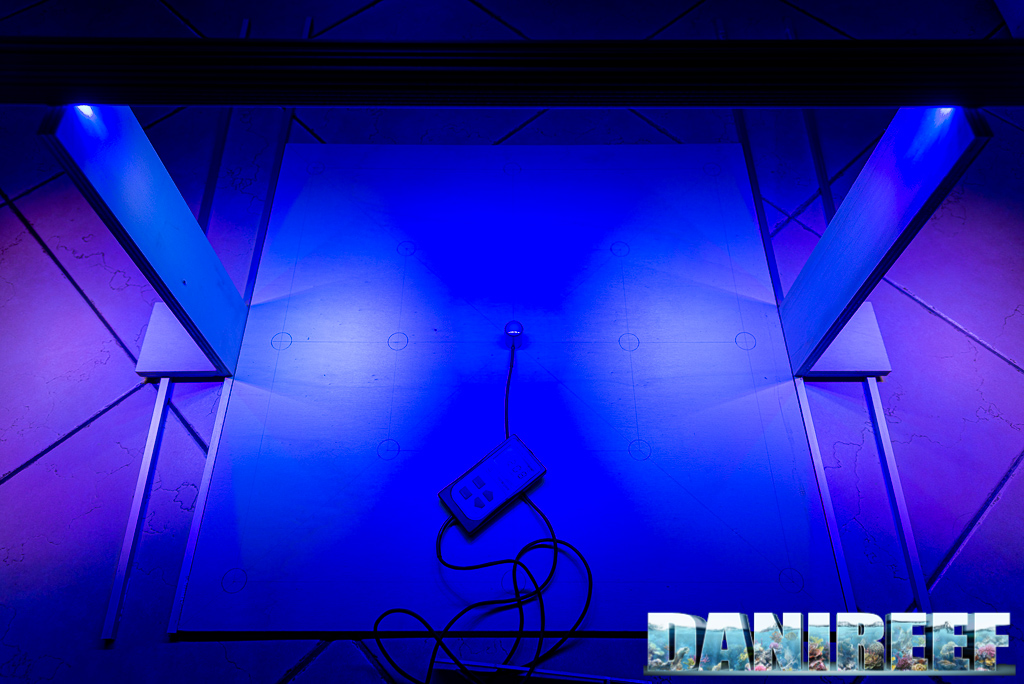
This is the condition of the test. Below there are the chart and the device, above the ceiling light placed on the spacers.
Here the collected values:
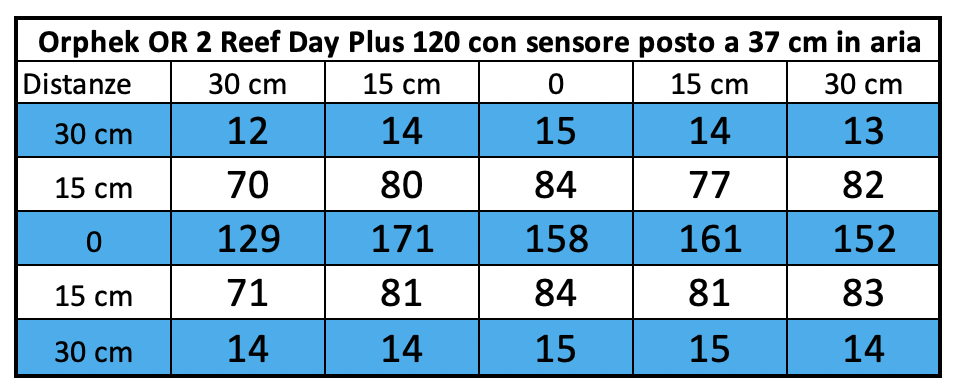
And that’s the corresponding chart.
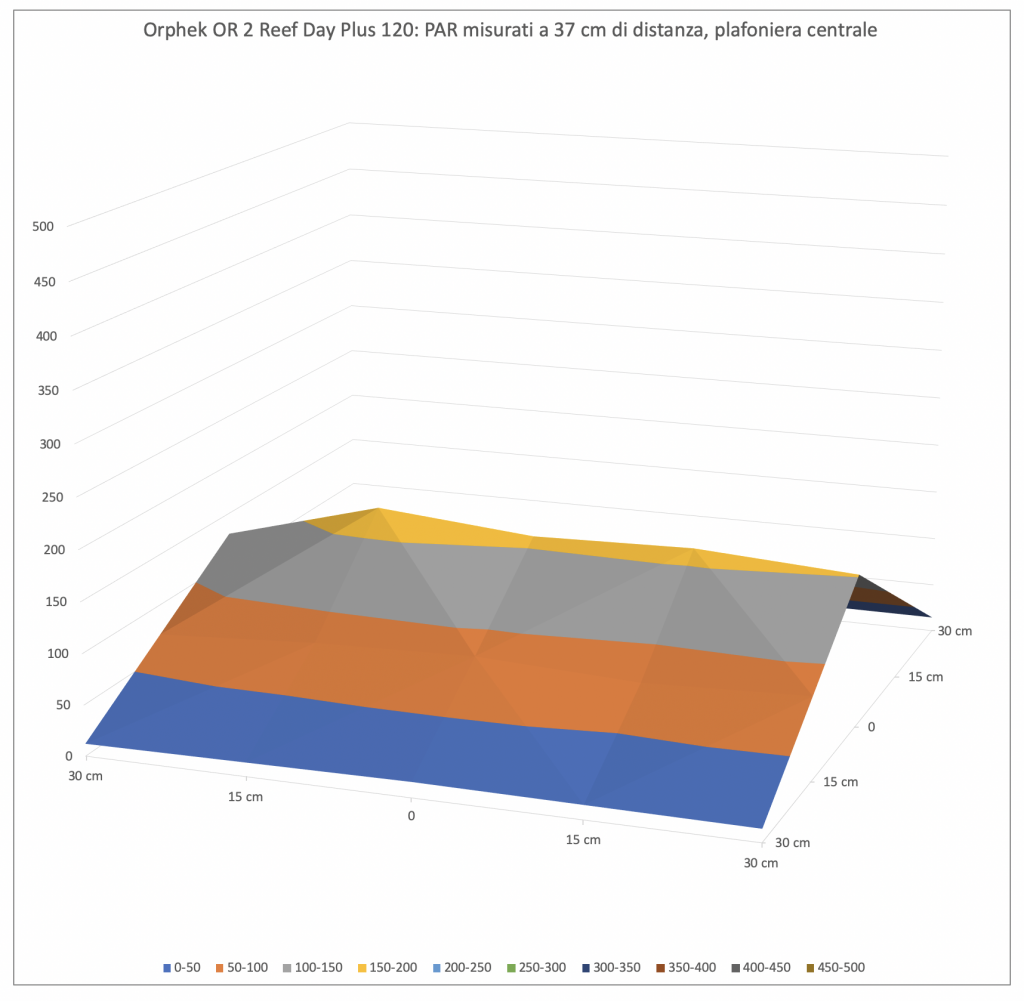
With a bigger space between ceiling lights and sensor, it decreases the difference between PAR in the middle and on the sides. The light spreads, but the central value decreases from 393 to 171 μmol m-2 s-1, in the two brightest point.
It stands out that the coverage it’s very complete.
PAR measurement from 57 cm of distance
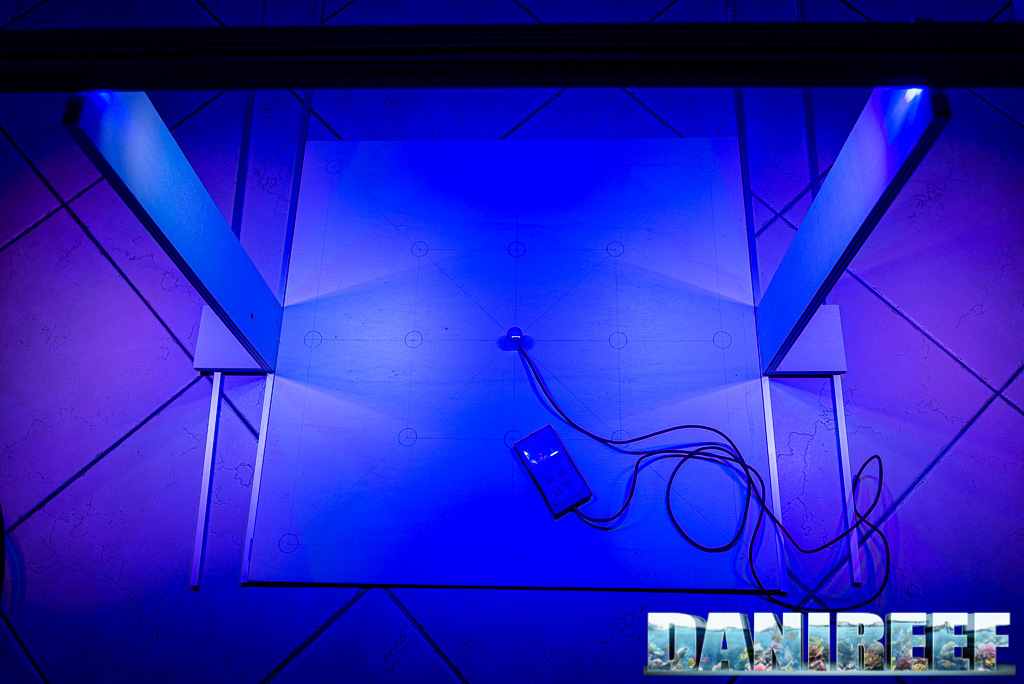
This is the condition of the test. Below there’s the chart, from this distance the device it is very visible, and the ceiling light placed on the spacers. After the first measurements we realized that this configuration precluded the peripheral LED from contribuing to the PAR so we distanced more the spacers. Visually, the illuminated area is extremely wide, so the specific power per cm decreases.
These are the collected values:
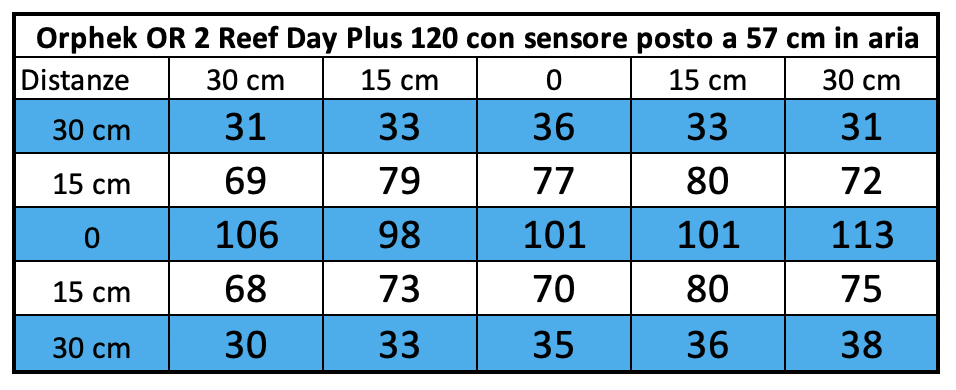
And that’s the corresponding chart.
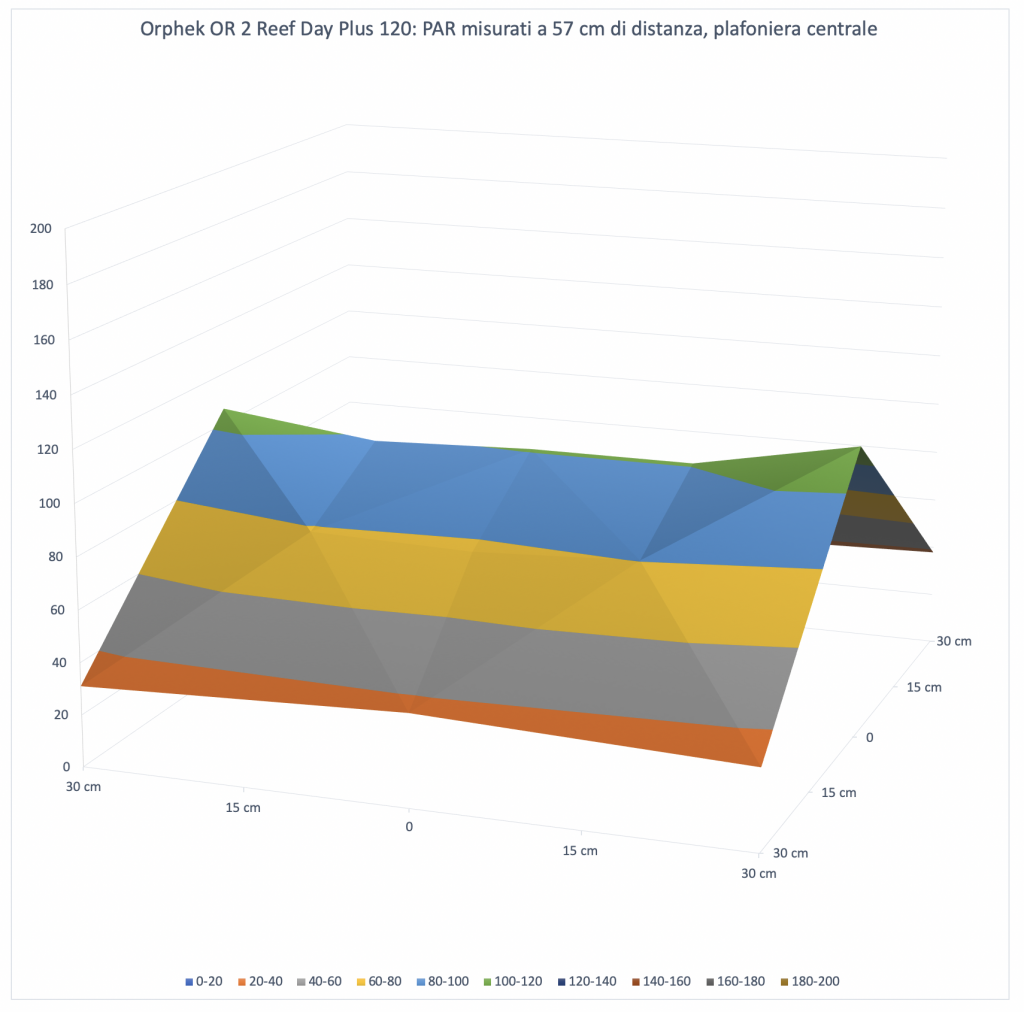
Increasing even more the space between ceiling light and sensor, the difference between PAR in the middle and on the sides doesn’t decrease as we expected, but it increases instead. There’s a perfect uniformity. The value in the middle decreases from 393 to 171 to 113 μmol m-2 s-1.
The PAR in the middle in the different configurations
Let’s continue with our technical measurements. We can see how, in a chart, the PAR collected in the middle decrease in the three different distances of our tests.
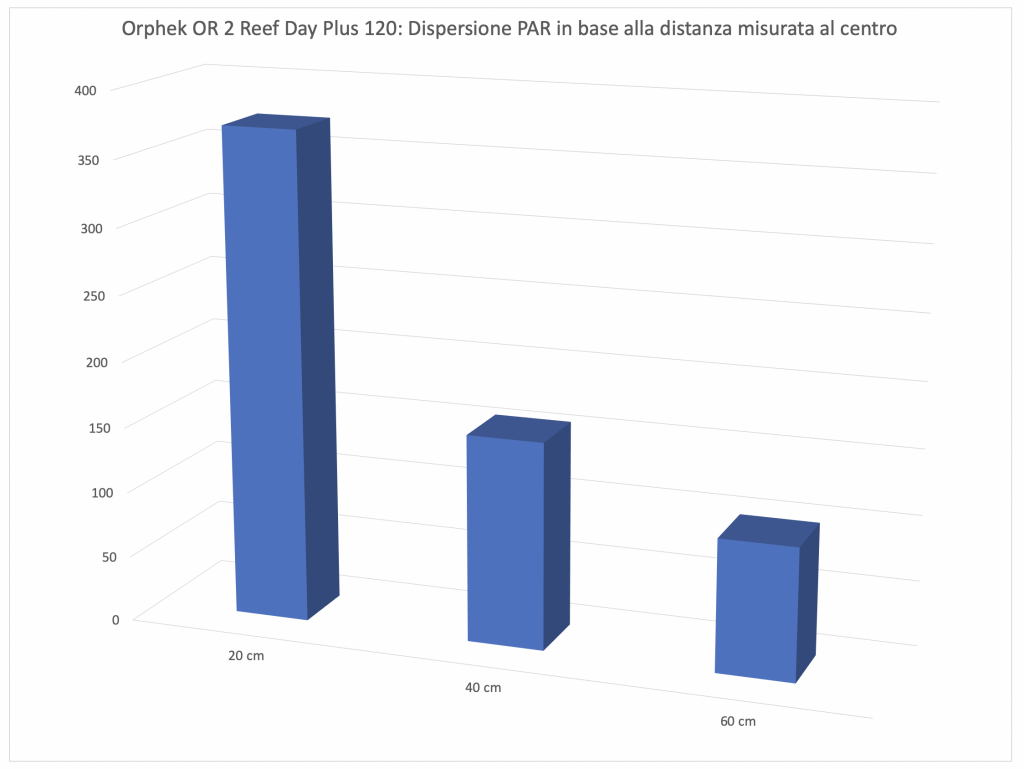
Energy variation of the Aqamai LRS depending on the distances
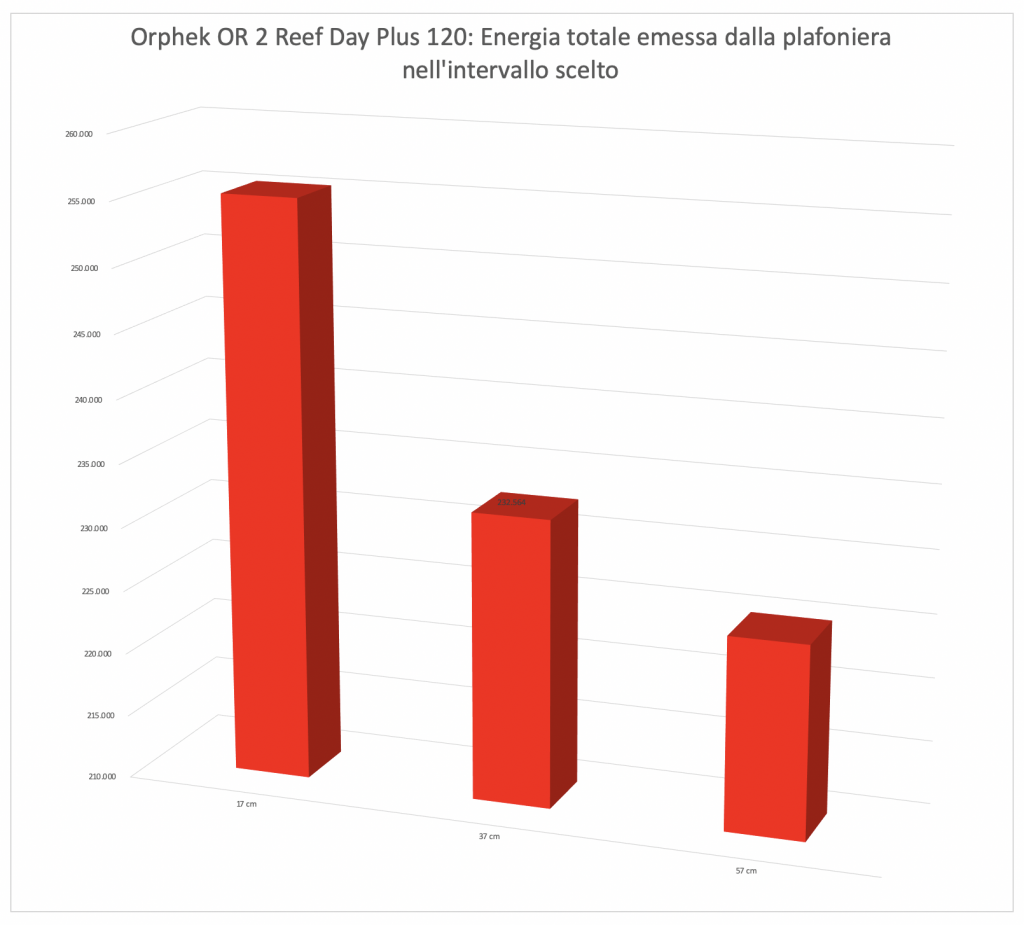
This is the most significant and most comparable data: the energy variation. We calculated the volumes of the three surfaces previously seen. It’s obvious that moving away from the ceiling light the PAR decrease, also because the light illuminates a wider space. In this way you can consider all the light energy contained in the 60×60 cm area subtended by the ceiling light. An it’s clear that the three values of 255.000, 233.000 and 225.000 assume a different connotation compared to the values in the middle. When the first ones decrease because of the increasing of the distances, the subtended area, that is the energy, decreases very slowly. The differences between the three areas is very low. A little energy is send off the area.
Looking at the values of the three curves it’s obvious that on the sides there’s more light at 57 cm rather than at 37.

Let’s continue on page three with the costs, the comparison with other ceiling lights and our final opinion.








